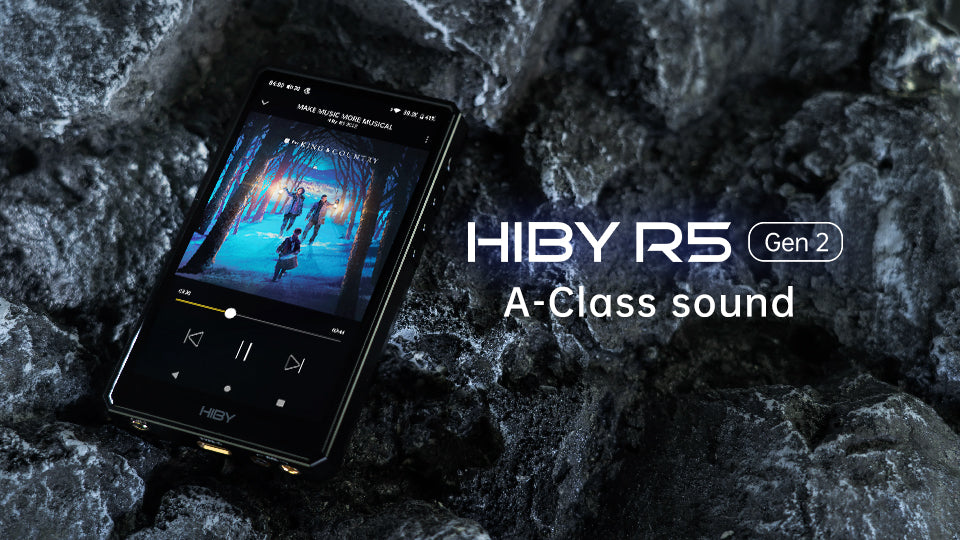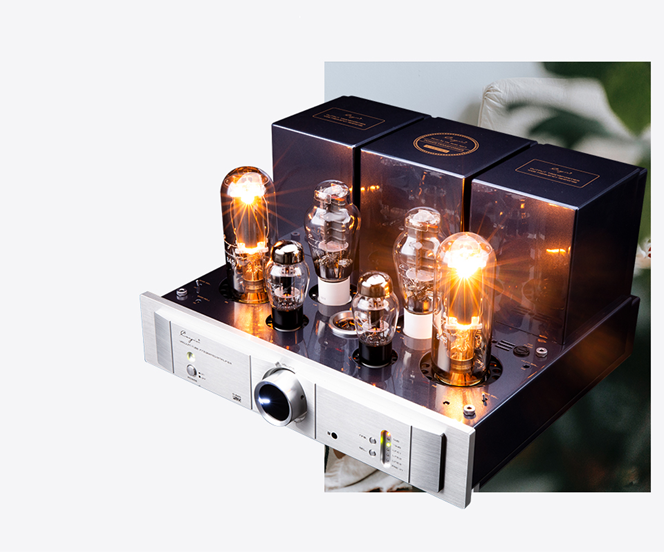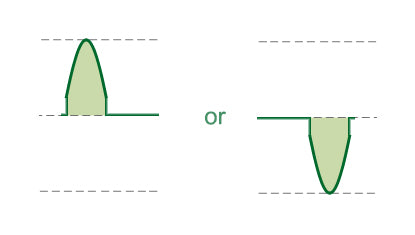So does the Class-A act consist of turning the R5 Gen 2 into a pack of cards with the Ace card on top? Or is there some deeper meaning? Read on!

In the last few years, there has been no end to new models of USB dongle DAC/amps for smartphones, so much so that users have been asking us what’s the difference between a digital audio player and a dongle stuck on a smartphone? Of course a dongle is a handy addition to any smartphone, and is by itself much more compact than any DAP or portable amp, but it’s so tiny that you wouldn’t even be able to fit an electrolytic capacitor in there, let alone any complex power supply or amplification circuitry. Really, a smartphone of old with a built-in headphone jack may have had more room for a hi-fi headphone amp than this. On the other extreme, we have full-size desktop headphone amps which sound sublime but aren’t going anywhere with your portable earphones. At the heart of many of these fullsize amplifiers is a pair of class-A amplification stages for each channel, which also aren’t going anywhere with your portable headphones because of their high power consumption. You don’t think that’s got anything to do with the “Class-A act” of the R5 gen 2 do you?
Actually that’s exactly what they are.
So then what is a class-A amplifier? What’s so special about it? Let start from the word “amplifier”. An amplifier obviously takes a small signal and turns it into a big one. This is done by taking the small signal as a controller for the output, which is magnified in terms of voltage or current. Common amplification components include tubes, triodes and field effect transistors, which complete the same purpose through different means.

High-end Cayin A-845 Tube Integrated amp
Supposing the input signal is a complete sine wave of 360 degrees per period, one way of classifying amplifiers of push-pull topology is by their “conduction angle” :

Class A amplifiers have a conduction angle of 360 degrees, which is to say that the full signal passes through the amplification circuit.
Class B amplifiers have a conduction angle of 180 degrees, which passes the top and bottom halves the signal through the push and pull parts of the amp respectively;
Class AB amplifiers have a conduction angle higher than 180 but typically under 200 degrees, creating some overlap between the push and pull circuitry;
Type C amplifiers have a conduction angle of less than 180 degrees. Such amps won’t be used in audio applications as they don’t cover the full audio waveform even with both push and pull components.
Other types from D onwards are not within the scope of this discussion, as they work on different principles.
As such, sine waves amplified by the class A amplifier look the same as the input:

whilst the push and pull parts of a class B amp sum together to recreate the original waveform

Figure 1: in theory

Figure 2: in reality
In reality, the amp circuits are not linear over the range where they’re being switched on and off, resulting in crossover distortion as shown above.
Class AB amplifiers put out slightly more than half the waveform on each end, for reducing crossover distortion:

So we see that only class A amps pass a full cycle whereas class B and AB need to recreate the signal from two halves. Most common audio amplifiers are Class AB. If class A can reproduce the full signal whereas class B and AB don’t, why do the latter exist?
Class A amplifiers have no crossover distortion, which yields a very smooth sound, and there is no switching delay to transients, for exemplary transient response. But type A amplifiers also expend full power 100% of the time! Class B amplifiers were designed for higher efficiency (negligible power consumption at rest), but has crossover distortion because of nonlinearity in the on-off transition, hence class AB was born as a compromise.
| Class | Typical efficiency | Advantage | Disadvantage |
| A | Approx. 15%~35% | No crossover distortion, smooth sound, fast transient response | low power efficiency, runs hot |
| AB | Approx. 50%~70% | Higher power efficiency than class A, less crossover distortion than class B | Compromise between class A and class B |
| B | Approx. 70% | Highest power efficiency | High crossover distortion, slow transient response |
It’s exactly because of the unparalleled advantages of Class A in all sonic criteria that it had always been the Holy Grail of HiFi audio. To allow more HiFi enthusiasts to experience the magic of Class A amplification, we conquered the difficulties in costs, size and heat dissipation to install a full Class A push-pull discrete amplification circuit for the first time in the entry level HiBy R5.

In the to-be-released HiBy R5 Gen 2, a push-pull Class A topology is used, the output stage employs emitter-follower current mode amplification for a low output impedance, yielding high control over the driven load. At the same time, the feedback circuit is full DC feedback, making the offset voltage approach zero at all times for the cleanest backgrounds.
To obtain the highest amount of amplification, we utilized double the amount of paired bipolar transistors for a fully balanced pair of discrete push-pull class A amplifiers per channel, utilizing 16 paired bipolar transistors, with strict parts matching and further corrected on the board level with DAC optimizations. And to counter the component parameter drift caused by heat from the class A circuit, we further implemented temperature based compensation for the circuit to ensure the highest performance at any temperature. The sense of balance in the circuit is enough to bring balance to the Force, soothe the minds of the worst OCD patients, you name it!
Reaching for sublime sound, this is price-no-object design in an entry level DAP! Are you excited about the new gen R5 yet?



